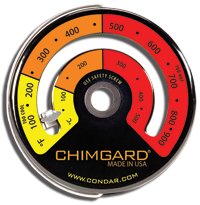Ive spent some time reading the forums and think i have a handle of running my first wood stove this season. I would like to run this by all of you to see if anything looks out of whack.
This is for using my 77 VC Vigilant
-Ensure 2 inches of sand or ash is coating the bottom of the stove
-The Air hole on the side should be left open when burning wood.
-The rear flap should be opened when starting the fire and then left to regulate its self.
-Twice a day (morning and night) run the stove in updraft burn around 500 degrees (stove top) for 30-40 minutes. This readies the stove for the days use and burns out any creosote buildup.
-Should also use the stove for late fall early spring in updraft mode as the draft may not be able to sustain a side draft burn.
-During colder months run the stove in updraft till 500 degrees stove top temp is met then you can load it up and switch over to side draft.
-When adding wood to a side draft burn, be sure to open the damper a few min prior to clear out any smoke.
-Once a week, using a shop vac, blow into the side air intake to blow out any ash build up.
-Also remove ash when needed as it gets close to the rear air holes.
-Check chimney 3-4 times throughout the season to ensure all is well.
If there is anything else I missed, or if anything looks wrong please let me know.
This is for using my 77 VC Vigilant
-Ensure 2 inches of sand or ash is coating the bottom of the stove
-The Air hole on the side should be left open when burning wood.
-The rear flap should be opened when starting the fire and then left to regulate its self.
-Twice a day (morning and night) run the stove in updraft burn around 500 degrees (stove top) for 30-40 minutes. This readies the stove for the days use and burns out any creosote buildup.
-Should also use the stove for late fall early spring in updraft mode as the draft may not be able to sustain a side draft burn.
-During colder months run the stove in updraft till 500 degrees stove top temp is met then you can load it up and switch over to side draft.
-When adding wood to a side draft burn, be sure to open the damper a few min prior to clear out any smoke.
-Once a week, using a shop vac, blow into the side air intake to blow out any ash build up.
-Also remove ash when needed as it gets close to the rear air holes.
-Check chimney 3-4 times throughout the season to ensure all is well.
If there is anything else I missed, or if anything looks wrong please let me know.


